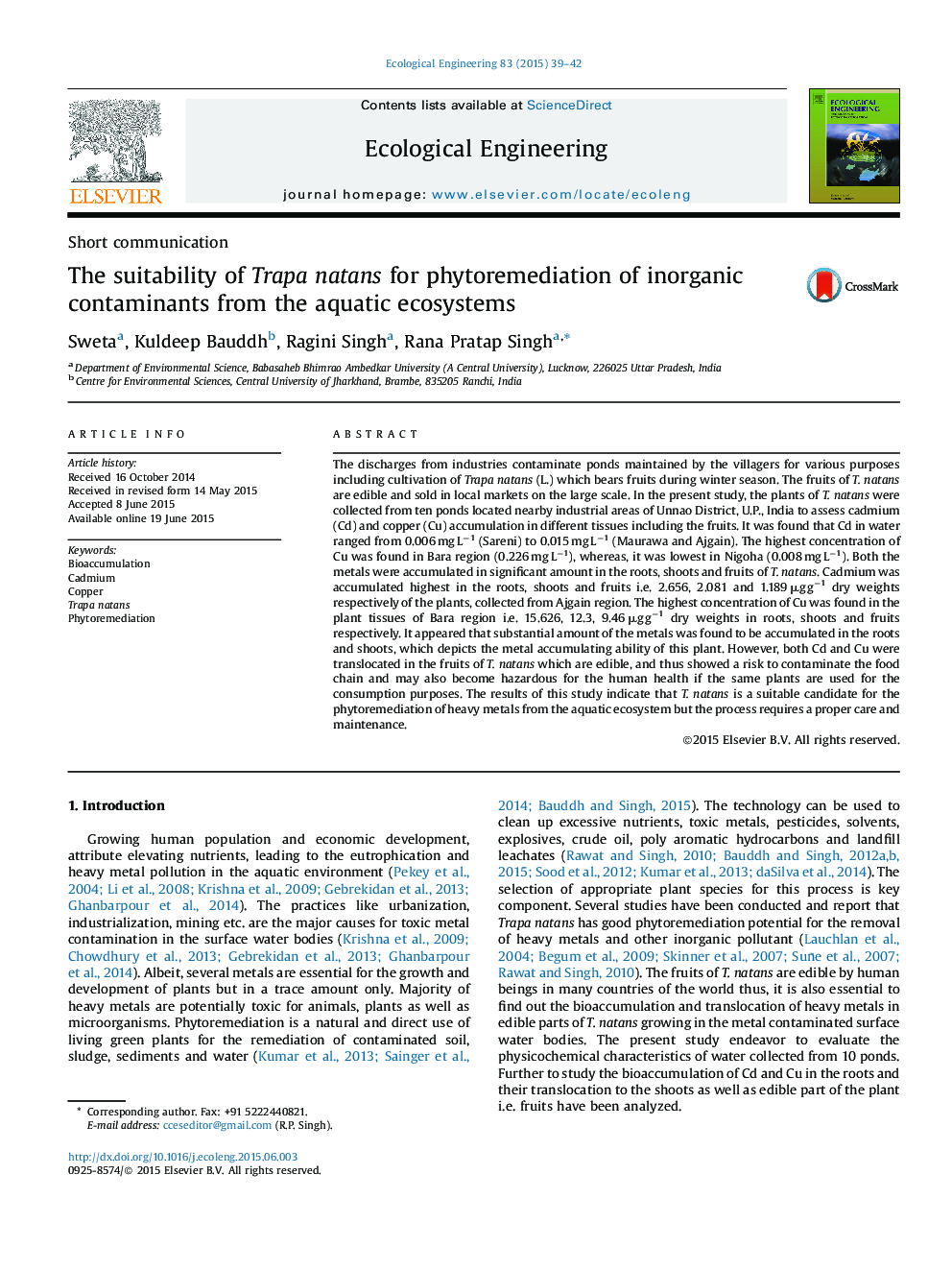| کد مقاله | کد نشریه | سال انتشار | مقاله انگلیسی | نسخه تمام متن |
|---|---|---|---|---|
| 4388847 | 1618016 | 2015 | 4 صفحه PDF | دانلود رایگان |
The discharges from industries contaminate ponds maintained by the villagers for various purposes including cultivation of Trapa natans (L.) which bears fruits during winter season. The fruits of T. natans are edible and sold in local markets on the large scale. In the present study, the plants of T. natans were collected from ten ponds located nearby industrial areas of Unnao District, U.P., India to assess cadmium (Cd) and copper (Cu) accumulation in different tissues including the fruits. It was found that Cd in water ranged from 0.006 mg L−1 (Sareni) to 0.015 mg L−1 (Maurawa and Ajgain). The highest concentration of Cu was found in Bara region (0.226 mg L−1), whereas, it was lowest in Nigoha (0.008 mg L−1). Both the metals were accumulated in significant amount in the roots, shoots and fruits of T. natans. Cadmium was accumulated highest in the roots, shoots and fruits i.e. 2.656, 2.081 and 1.189 μg g−1 dry weights respectively of the plants, collected from Ajgain region. The highest concentration of Cu was found in the plant tissues of Bara region i.e. 15.626, 12.3, 9.46 μg g−1 dry weights in roots, shoots and fruits respectively. It appeared that substantial amount of the metals was found to be accumulated in the roots and shoots, which depicts the metal accumulating ability of this plant. However, both Cd and Cu were translocated in the fruits of T. natans which are edible, and thus showed a risk to contaminate the food chain and may also become hazardous for the human health if the same plants are used for the consumption purposes. The results of this study indicate that T. natans is a suitable candidate for the phytoremediation of heavy metals from the aquatic ecosystem but the process requires a proper care and maintenance.
Figure optionsDownload as PowerPoint slide
Journal: Ecological Engineering - Volume 83, October 2015, Pages 39–42
